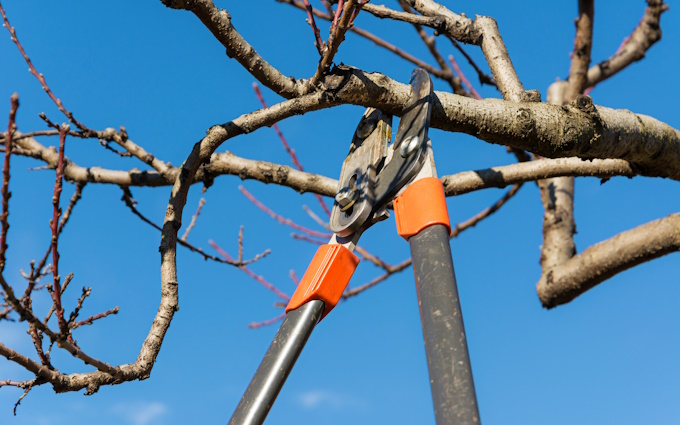Breaking Down the Best Ways to Take Care of Trees When Cold Weather Is Approaching
Winter seems like the time when nature takes a break. The leaves on your trees wither and fall. Your flowers and grass succumb to the cold weather. However, don’t be fooled by appearances. Beneath the surface, your trees remain active and reliant on natural resources to keep them alive.
Proper winter tree care makes a significant difference in the health and vitality of your landscape come spring. By employing the following best practices, you can ensure your trees pick up right where they left off once warm weather returns.
Winter Tree Care Tips to Use Before Cold Weather Arrives
Winter is a challenging time for trees and plant growth. Sub-zero temperatures, frigid winds, and bouts of snow and ice can test the integrity of the most resilient of trees. The best way to take care of trees is by preparing them for the road that lies ahead. Follow these winter tree care tips before the first snow.
Professional Inspection
First things first, you should assess the current health of your trees with an inspection performed by an arborist with a professional tree care service. If there are any problems with your trees, it’s best to catch them now rather than roll those problems over into the cold weather season. An inspection will reveal if your trees have any diseases, dead branches, rot, invasive pests, or structural issues.
Pruning and Trimming
The roots of your trees absorb water and nutrients and disperse them to its branches, including branches that are dead or dying. Because nutrients are a finite resource, it’s important to strategically prune and trim all the dead and dying branches of your trees before the cold weather hits. This winter tree care tip not only helps the tree’s structure, but it also prevents these branches from falling due to the added weight of snow or ice, which can result in a tree emergency.
Mulch Application
A layer of mulch around the base of your trees serves as a protective blanket that helps keep their roots insulated and at the proper temperature. Further, mulch is excellent at retaining moisture and delivering vital nutrients to the soil. Apply a layer of mulch that’s at least two inches deep and extends all the way out to the fringe, or as close as possible.
Taper and thin the layer of mulch when nearing the trunk and stop at the root flare, which are the visible roots flaring out from the trunk at the base of the tree. Volcano mulching, which is a process that piles mulch right around the trunk, should be avoided to mitigate potential tree issues. Be sure to research carefully what type of mulch is best for your species of trees, or ask a professional for their help. Most tree care experts recommend avoiding dyed mulch options because of the chemical leaching that can occur.
Hydration
Properly watering your trees before the ground freezes is crucial, especially when dealing with saplings that have yet to establish a root system. Hydrated trees are more resilient to cold and can better withstand harsh conditions.
Protection from Deer and Rodents
Winter is a difficult time for wildlife to find food. To protect young trees from being nibbled on by deer or rodents, consider installing tree guards or fencing around the base of your trees. This ensures their bark isn’t compromised so that they can withstand typically winter weather.
Cabling and Bracing
Snow and ice storms are bad news for trees with structural issues. Winter precipitation can add significant additional weight. When that kind of duress is placed on a weak branch, it becomes a safety issue that threatens pedestrians and property.
If your tree has known structural issues, it’s best to look into cabling and bracing services. By investing in this winter tree service, your tree gets necessary structural support to ensure their branches remain intact.
Winter Tree Care Monitoring and Maintenance
If you’ve done all your preparation work, you should have a much easier time maintaining your trees throughout the winter season. Follow these winter tree care tips after the first freeze.
Snow Removal
After heavy snowfall, gently shake off excess snow from your tree’s branches that you can reach. This helps prevent breakage due to the weight of accumulated snow.
Salt Awareness
Be especially cautious with salt or de-icing products used on driveways and walkways. These can soak into the ground and negatively impact the health of nearby trees.
Winter Watering
Continue to water your trees when temperatures are above freezing and the ground isn’t frozen. If past winters are any indication, there will be a few random days where it’s unseasonably warm and sunny. Make those your tree watering days. Current winter tree care best practices recommend watering your trees one to two times per month.
Winter Pruning
By this point, the pruning you did in the fall will have eliminated the majority of dead or dying branches. However, some light winter pruning may be required, depending on the tree and its overall condition. Be sure to monitor it closely for potentially problematic areas.
The Winter Tree Care You Do Now Pays Off in the Spring
By following these winter tree care tips and best practices, you can maintain a healthy and thriving landscape all year round. Trees are essential for the environment and your property’s aesthetics, so taking care of them during the winter months is a vital part of responsible tree ownership.
For homeowners who need assistance, you can find winter tree care services in Kansas City by searching the local tree care companies in your area. Be sure to book your appointment for a tree inspection,pruning and trimming, and other essential services before the ground freezes for optimal results.

